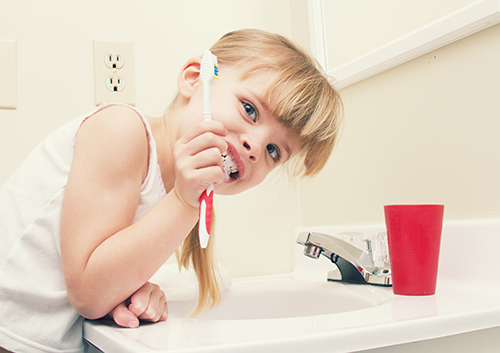What is a crown?
April 27th, 2022

If you have never had a crown before, you might be wondering why crown treatment is best, what the procedure involves, and which type of crown to choose. Let’s get down to the basics of crowns!
A crown is the best way to treat many dental conditions, either to strengthen and save the tooth or to improve its appearance. We might suggest a crown if you have any of the following conditions:
- A filling that needs to be replaced, without enough tooth structure left to fill properly
- A tooth that is fractured or broken, or so weak that it might fracture
- A recent root canal
- An implant
- A bridge which needs a crown to serve as the base for attachment
- A tooth that is discolored or irregularly shaped
On your first visit to our Naples, FL office, Drs. Randold Binns and David Clary will prepare the tooth that will be receiving a crown. A tooth might have to be built up if there isn’t enough of the original tooth left, or the top and sides of the tooth will be shaped down so that the crown fits smoothly and evenly with your other teeth. An impression will be made and sent to a dental lab so that a crown with the perfect fit for your tooth and mouth can be created. A temporary crown will be put in place to protect your tooth while the final crown is fabricated.
The permanent crown is a cap which covers your tooth. It can be made of various materials, which all offer different advantages:
- Metal Crowns—made of gold, platinum or base metal alloys, these are the longest lasting. Because of their metallic color, they are often chosen for back molars where they are less visible.
- Porcelain Over Metal—because the color of the porcelain is matched to your natural teeth, these crowns look very realistic. Porcelain is more fragile than metal, so there is the possibility that they won’t be as durable.
- Resin—less expensive than other options, but these crowns are more fragile and do not wear as well.
- All Porcelain/All Ceramic—the most realistic looking option, especially for front teeth, and also suitable for anyone with a metal allergy. They are, again, not as strong as metal crowns, and can be subject to damage.
- Stainless Steel—often used for baby teeth or as a temporary crown for adult teeth.
We’ll discuss your options and help you decide on the best type of crown for you. When the crown is finished at the dental lab, you will have one more visit where the crown will be secured in place. We will make sure your bite is comfortable and the color and appearance of the crown are satisfactory. We will also give you instructions for the next few days following the procedure, and can make adjustments if needed.
A crown is a perfect example of form and function working together: a crown maintains the beauty of your smile and preserves the health of your tooth. If you need a crown, we will be happy to talk to you about your best options for a strong, long-lasting, and natural smile.




 Website Powered by Sesame 24-7™
Website Powered by Sesame 24-7™